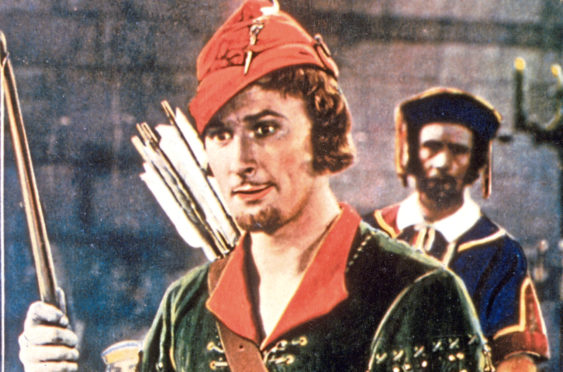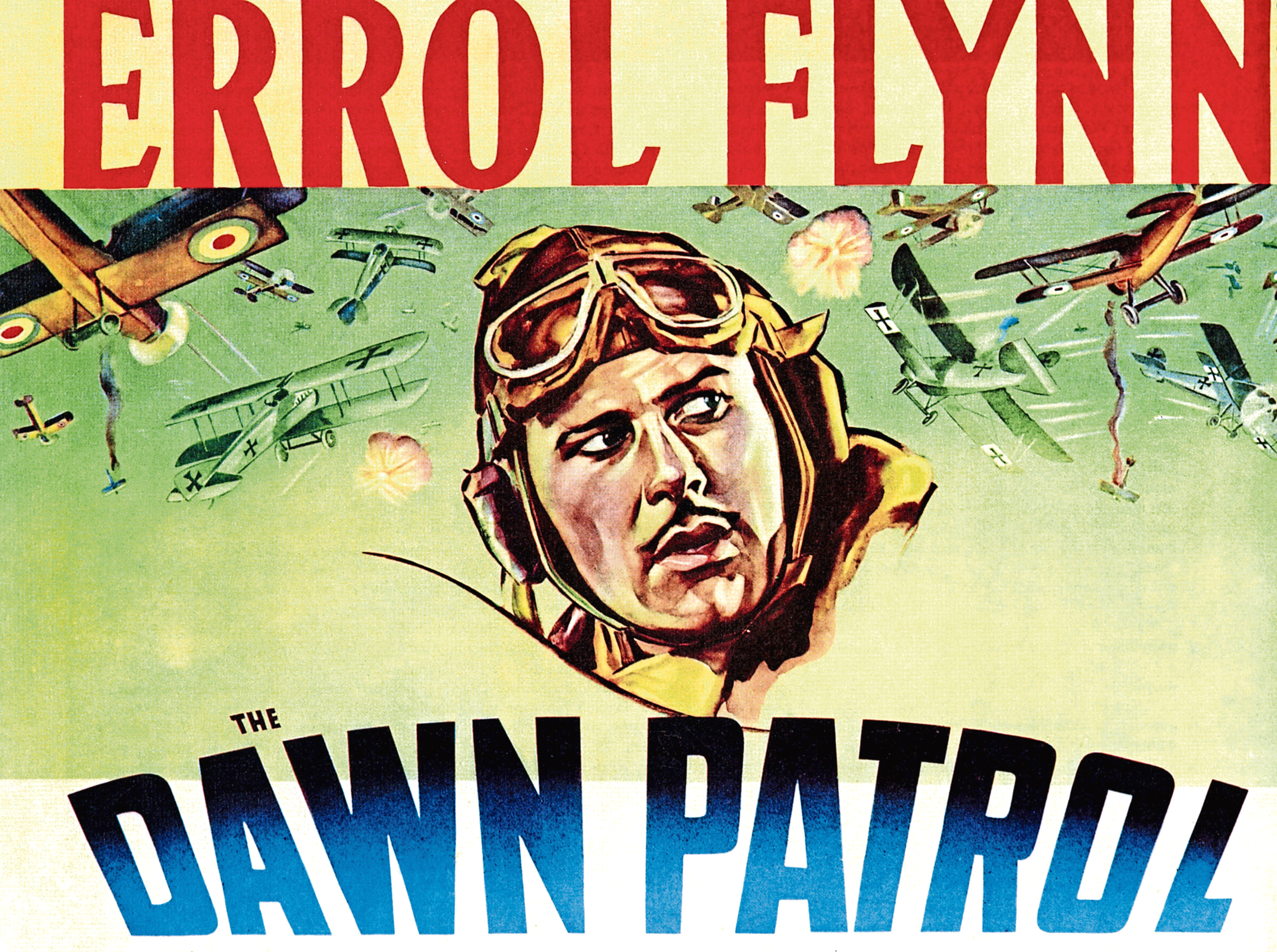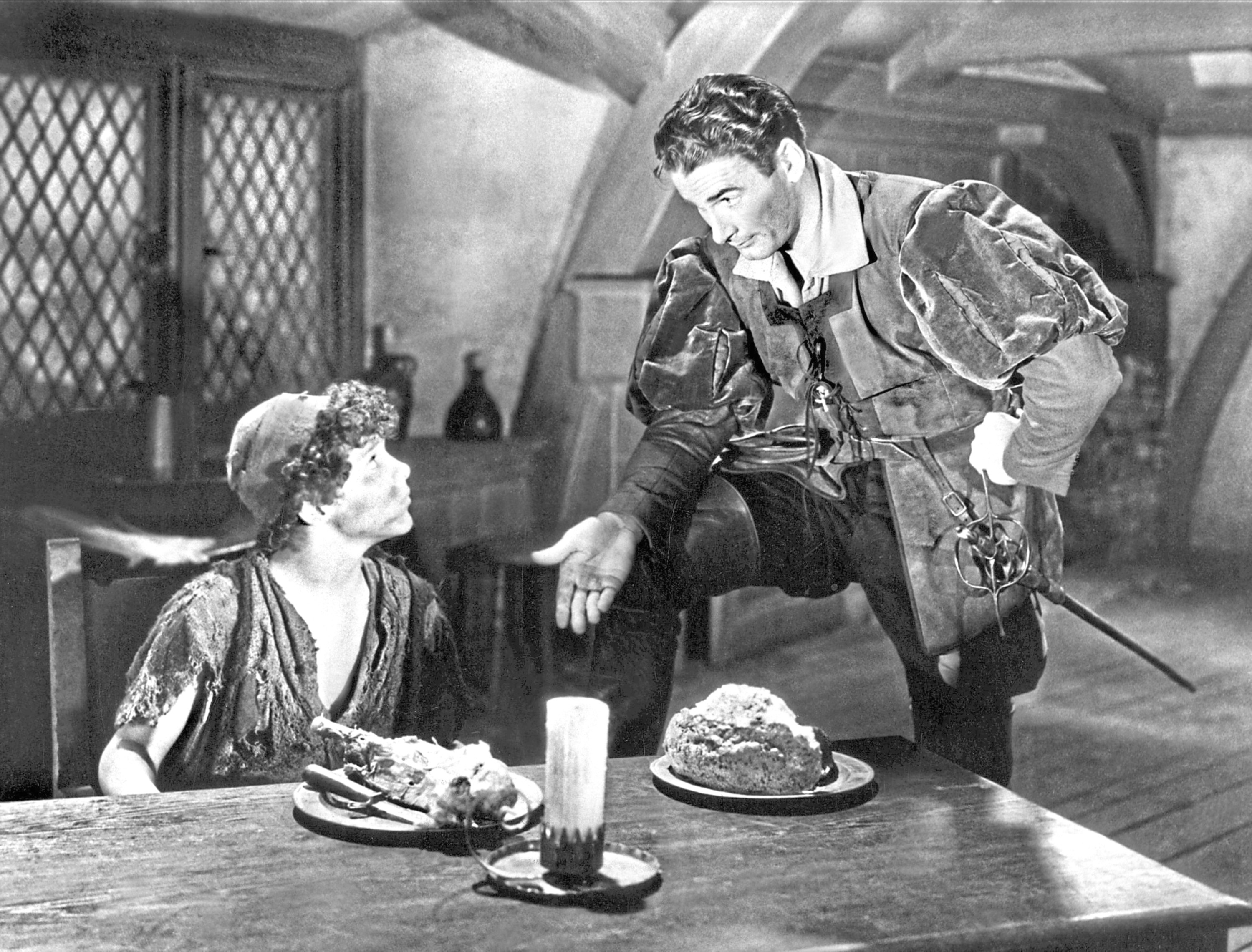
Aware that they risked typecasting Errol Flynn if they kept giving him the same kind of movie, Warners opted for a change of pace in 1937.
Green Light, a medical drama, saw him play a doctor and, though The Prince And The Pauper was another swashbuckler, he also got a second melodrama in Another Dawn, in that busy year.
The Perfect Specimen, however, was a real shot in the dark – Errol Flynn as a funny man?
Once more, it was directed by Michael Curtiz, the man Flynn had fallen out with on The Charge Of The Light Brigade.
This time, however, Flynn played a very different sort of chap, Gerald Wicks, heir to a vast fortune and a man who has been so pampered and sheltered that he’s never stepped outside the gates of his family estate.
Then, though, he embarks on an adventure with Mona Carter, a newspaper reporter, and falls for her hook, line and sinker.
The year 1937 was one in which there clearly weren’t enough hours in the day, because in that amazing 12 months Flynn also managed to write a book, travelled to Spain to work as a war correspondent during the Spanish Civil War, and took a lengthy holiday in Europe.
Perhaps all that serious activity helped, because he pulled off a very nice job as a funny man in The Perfect Specimen.
Warners had fancied Carole Lombard to play opposite him, or perhaps the less well-known Miriam Hopkins, and at one point it looked like Hopkins would be the perfect foil.
The beautiful and intellectual actress, however, who would later be something of a pioneer in the TV world, decided against it. This led Warners to take a look at who was already on their roster and might fit the bill.
Olivia de Havilland, needless to say, sprang to mind, but so did Joan Blondell. Reckoning de Havilland would have been ideal if the flick had been a straightforward romance, but that Blondell would better suit its off-the-cuff, quirky style, it was Joan who got it.
She became ill during filming but thankfully recovered, as they were right with their choice and Blondell and Flynn did indeed manage to make a most entertaining comedy together.
Some reckon Flynn’s first wife, the stunning Lili Damita, was a major strength as he turned himself into a star in those days.
When she married him in 1935, he was almost unknown, but by the time they parted in 1942 he was a huge star.
Born Liliane Marie Madeleine Carre in Blaye, France, she had been educated in convents and ballet schools and was a dancer at the Opera de Paris by the age of 14.
One of the most beautiful actresses of her time, she went to the USA in 1928, invited by Samuel Goldwyn who could see much star potential.
She would, however, give up her career when she married Flynn and they had their son, Sean, a year before their split.
There was a heartbreaking story many years later regarding Sean.
By the time of the troubles in Cambodia in 1970, he had become a freelance photo journalist and was there working for TIme magazine. He and a female journalist went missing near Phnom Penh.
His mother would spend a fortune trying to find them, but in 1984 he was declared dead. Remains were found in 2010, but they were not his, and his whereabouts remain unknown.
For his father, the trouble with his incredible 1937 was how he could possibly match or better it.
The Adventures Of Robin Hood would be a rather good start, that was for sure, and it kept the momentum of Flynn’s career going.
The 1938 classic would become his best-known and best-loved film, and many folk of a certain generation simply picture Errol Flynn whenever the name Robin Hood comes up.
Olivia de Havilland was the perfect Maid Marian, too, and it is a magical movie, beautifully shot, and it raked in a fortune. Which was just as well, as it had cost a fortune to make.
Directed once more by Curtiz, and with Basil Rathbone and Claude Rains on board, too, how could it fail?
Adored and acclaimed by the critics on its initial release, they seem to admire it even more today, and it was deemed “culturally, historically or aesthetically significant” by the United States Library of Congress, being selected for preservation by the National Film Registry.
Next time you enjoy it, look out for Little John – he is played by Alan Hale, Sr, who also played him 16 years earlier in another film version, and a third time in 1950’s Rogues Of Sherwood Forest.
Clearly, an actor who never aged!
Before it came out, millions of cinema fans automatically equated Robin Hood with Douglas Fairbanks, who had played him in that 1922 version.
So it was incredible to see even him replaced by a new version, which says a lot about Flynn’s performance.
It was also the third film with Flynn and de Havilland, and they would eventually do nine together, many of them huge hits.
It’s said that every version of Robin Hood since, whether a local amateur drama stage show or another Hollywood attempt, whether a cartoon or a TV series, based much of what it did on the version given to us by Errol Flynn and Olivia de Havilland.
The brilliant de Havilland had only got her first top billing the previous year, in a comedy, Call It A Day.
She played the daughter of a middle-class English family who falls for a handsome artist, hired to paint her portrait.
It didn’t do great business, but she kept at it and was soon getting parts strong enough to see her approached for Robin Hood with Flynn.
Robin Hood was, at that time, the most Warners had spent on a flick, but worth every penny. Flynn was now a true superstar and could seemingly do no wrong.
Even his first book, Beam Ends, got great reviews.
His tale of a boat trip around Australia and that part of the world, with more than a smattering of debauchery, great passages on loneliness, the Great Barrier Reef and Aboriginal peoples, it was not at all what readers might have expected from a famous actor.
And it was very well written!
Alas, if it seemed that he could do no wrong now, cinema was about to turn round and slap him in the face, bringing him back to earth with a bump.
Four’s A Crowd, a screwball comedy in 1938, could have been the ideal follow-up to Robin Hood. Instead, it was a flop, despite the presence of the usually-reliable Curtiz and de Havilland.
Errol Flynn had been reminded that he was far from infallible.
Bette Davis, too, had been going through a rough patch, having left for England during a dispute with the studios, then coming home to be offered what she considered mediocre jobs.
The first offer she actually fancied was The Sisters, and she also welcomed the chance to work with Flynn, until she saw that he would be billed higher than her.
“At that time I had no billing clause in my contract,” she admitted. “I felt after Jezebel that my name should always appear above the title. That is star billing.”
She was eventually billed above the title, though still second to Flynn.
He played a sports reporter from San Francisco who shows up at a party and whisks a young lady off her feet, just as another man is about to propose to her.
Within hours, they have announced they fancy getting hitched, and she leaves for San Francisco with him, against her parents’ wishes.
If we say a fair bit of drama follows, we aren’t exaggerating: she has a miscarriage, he turns to drink, San Francisco has its infamous earthquake, and she is mistakenly arrested for being a prostitute.
It was quite a tale, and still would be today!
As the critics’ comments show, it went down well.
“Bette Davis acts with such extraordinary grace, sensitivity and distinction that hers is already being acclaimed the movie performance of the years,” said one.
If Flynn didn’t get everything quite spot-on, however, he also got praise – “Flynn’s happy-go-lucky reporter is a vivid portrayal, although his slight English accent seems incongruous,” said another.
His private life and recreational habits didn’t always get such lavish praise.
Errol Flynn could party like any music star of that time or the future, and he was quickly earning himself a reputation as a womaniser, hard drinker and, in the 40s, a narcotics abuser.

The Dawn Patrol, released on Christmas Eve of 1938, saw him play a very different kind of man than the one he seemed to be in his private life.
Flynn played Captain Courtney, leader of the Royal Flying Corps’ A Flight during the First World War.
David Niven was his friend Scotty with Basil Rathbone the squadron commander, Brand.
As so many pilots have been lost, a bunch of young and inexperienced ones are brought in to replace them, and everyone fears more disasters ahead.
Brand and Courtney are at each other’s throats over the loss of life, Courtney insisting he needs proper pilots with the necessary experience.
When it comes to taking on their German opposite numbers in the sky, though, they prove themselves capable of amazing things.
With a pacifist theme running through it just below the surface, they weren’t quite sure how audiences would take to it, on the verge of a real war.
They needn’t have worried, and that unusual thing happened – the critics loved it almost as much as the public.
Once again, despite all the lurid headlines about his life away from the big screen, Errol Flynn had demonstrated that he could turn his hand to any kind of story and make a hit of it.
In the years ahead, he would try something else he hadn’t dabbled in before, on horseback rather than the cockpit of a plane…

Enjoy the convenience of having The Sunday Post delivered as a digital ePaper straight to your smartphone, tablet or computer.
Subscribe for only £5.49 a month and enjoy all the benefits of the printed paper as a digital replica.
Subscribe © Allstar/WARNER BROTHERS
© Allstar/WARNER BROTHERS